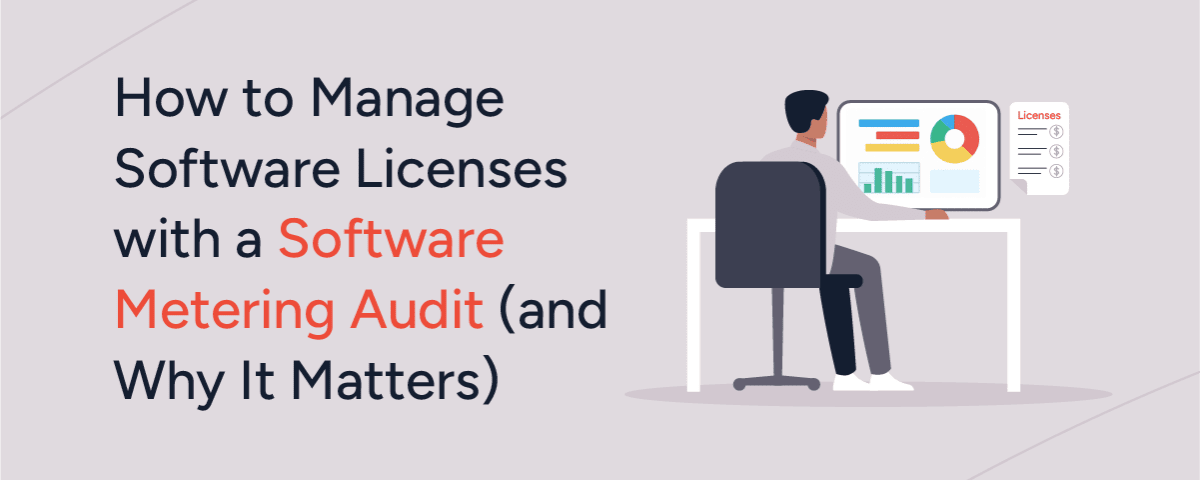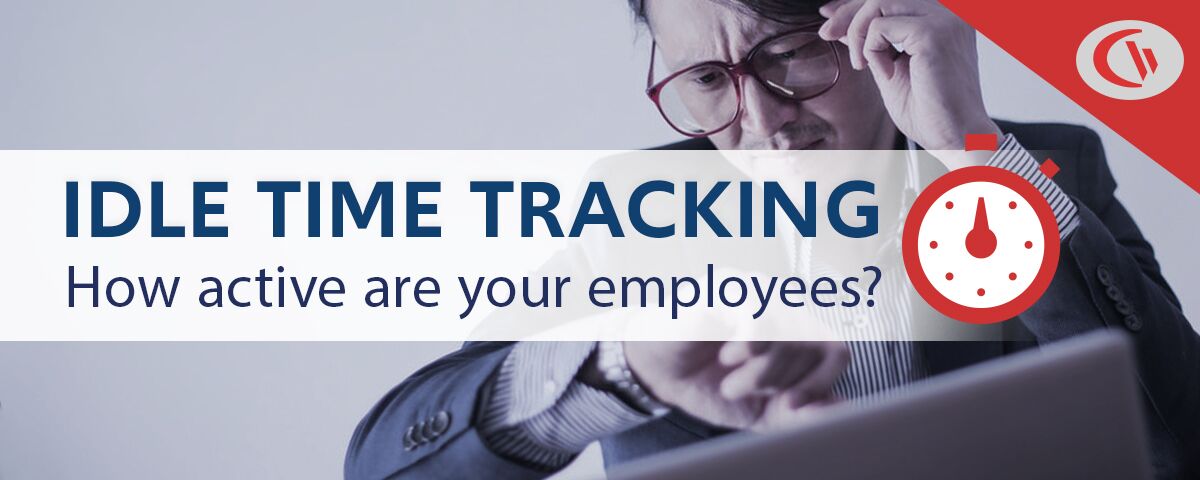How to Manage Software Licenses with a Software Metering Audit (and Why It Matters)

Table of Contents
- How to Manage Software Licenses Effectively
- What Is Software Metering?
- How to Manage Software Licenses with a Software Metering Audit?
- How to Implement a Software Metering Solution?
- Why Software Metering Is a Smart Business Move?
- Ready to Take Control of Your Software Assets?
- Frequently Asked Questions (FAQs)
How to Manage Software Licenses Effectively?
Managing software licenses shouldn’t be a guessing game. With rising IT costs and stricter compliance demands, visibility into software usage has become essential — not optional.
Software licensing is one of the most controllable areas of IT spend, yet it’s often overlooked due to a lack of usage data. That’s where software metering comes in.
By tracking how applications are used across your organization, you can uncover underused software, eliminate unnecessary expenses, and stay compliant with license agreements — all with real-time insights that drive smarter decisions.
What Is Software Metering?
Software metering, also sometimes referred to as software license usage tracking or SCCM software metering, tracks how frequently and how long applications are used on each device in your organization. This gives IT, procurement, and compliance teams insight into:
- Which applications are heavily used
- Which licenses are underutilized or unnecessary
- Whether unauthorized or unapproved software is in use
The end goal of knowing how to manage software licenses through software metering? Optimize software spend, reduce waste, and ensure compliance.
Also Read: What Is Software Metering? Cut Tech Waste & Save Millions
Start minimizing your software costs today.
Are you ready to start tracking software usage and start saving time and money?
How to Manage Software Licenses with a Software Metering Audit
You don’t need to wait for a software audit to start managing your licenses proactively. Here’s how to conduct an internal audit using best practices:
Step 1: Inventory All Software in Use
Start by cataloging all installed applications across your network to learn how to manage software licenses effectively. Use endpoint management tools or software inventory features in BrowseReporter to identify all software titles, versions, and license types, including both SaaS subscriptions and locally-installed apps.
Step 2: Map Licenses to Entitlements
Compare what’s installed against your purchased licenses by gathering purchase records, vendor contracts, and license keys. Identify any over-licensed or under-licensed applications, in addition to tracking expiration dates and renewal schedules.
Step 3: Monitor Actual Usage
Use software metering to understand how each application is being used by measuring active versus idle time, identifying who is using which apps and how often, and detecting rarely used or never-used software. BrowseReporter makes this easy with real-time usage monitoring across desktops, laptops, and remote devices.
Step 4: Generate Usage Reports
Once you’ve compiled all your usage data, you can export detailed reports to support your findings, including per-user, per-device, or per-application usage data, historical usage trends for budget planning, and reports formatted specifically for compliance audits or procurement reviews.
Step 5: Take Action Based on Insights
Use your audit findings to reclaim unused licenses, adjust license counts to match actual needs, remove unauthorized or shadow IT applications, and improve your procurement decisions.
Also Read: Employee Internet Monitoring Software—Reports & Dashboards
How to Implement a Software Metering Solution
Manually performing software audits is time-consuming — and often inaccurate. Here's how to automate and streamline the process with a software metering solution like CurrentWare’s BrowseReporter.
Step 1: Deploy BrowseReporter on Endpoints
Install BrowseReporter agents on managed devices (desktops, laptops, remote endpoints). It supports both cloud and on-prem deployments.
Step 2: Configure Software Usage Tracking
Enable application-level tracking to monitor what software is launched, the duration of active use, and idle vs productive usage time. You can also set thresholds to alert your team when activity exceeds defined limits.
Step 3: Schedule Automated Reports
Use custom reporting to automatically generate daily, weekly, or monthly usage summaries, per-user or per-department breakdowns, and alerts for unauthorized software activity. This will help ensure your team stays proactive, audit-ready, and aligned with software usage policies.
Step 4: Integrate with Your ITAM Strategy
Pair BrowseReporter with your IT asset management platform or SCCM setup for complete oversight, gaining deeper insights that help you detect license misuse, support software audits, and align software usage with business needs.
Also Read: How to Track Software Usage in Your Network | BrowseReporter
Why Software Metering Is a Smart Business Move
With real-time usage insights, software metering empowers your team to reduce waste, stay compliant, and make smarter, security-conscious decisions about your software investments. Here's what you can achieve:
- Cut software licensing costs: Eliminate unused applications and avoid wasteful renewals.
- Ensure license compliance: Stay audit-ready by aligning your usage with your entitlements.
- Make data-driven procurement decisions: Right-size your software portfolio based on actual needs.
- Strengthen security and control: Detect and remove unauthorized applications before they become a liability.
Also Read: Software License Optimization with Cost Insights by CurrentWare
Ready to Take Control of Your Software Assets?
CurrentWare’s BrowseReporter gives you full visibility into how software is used across your environment, making it easier to understand how to manage software licenses effectively. With application-level tracking, real-time alerts, and customizable reports — all supported by flexible deployment options — BrowseReporter fits seamlessly into your existing infrastructure.
- Monitor app usage on managed devices to identify underused or unnecessary software and make informed licensing decisions.
- Set usage thresholds to get automatic alerts when application activity exceeds defined limits or deviates from expectations.
- Generate detailed reports by user, device, or application to support audits, budget planning, and compliance.
- Deploy in the cloud, on-prem, or in hybrid environments to meet your operational and security requirements.
- Enhance your existing Microsoft SCCM setup with deeper tracking, alerting, and reporting capabilities.


